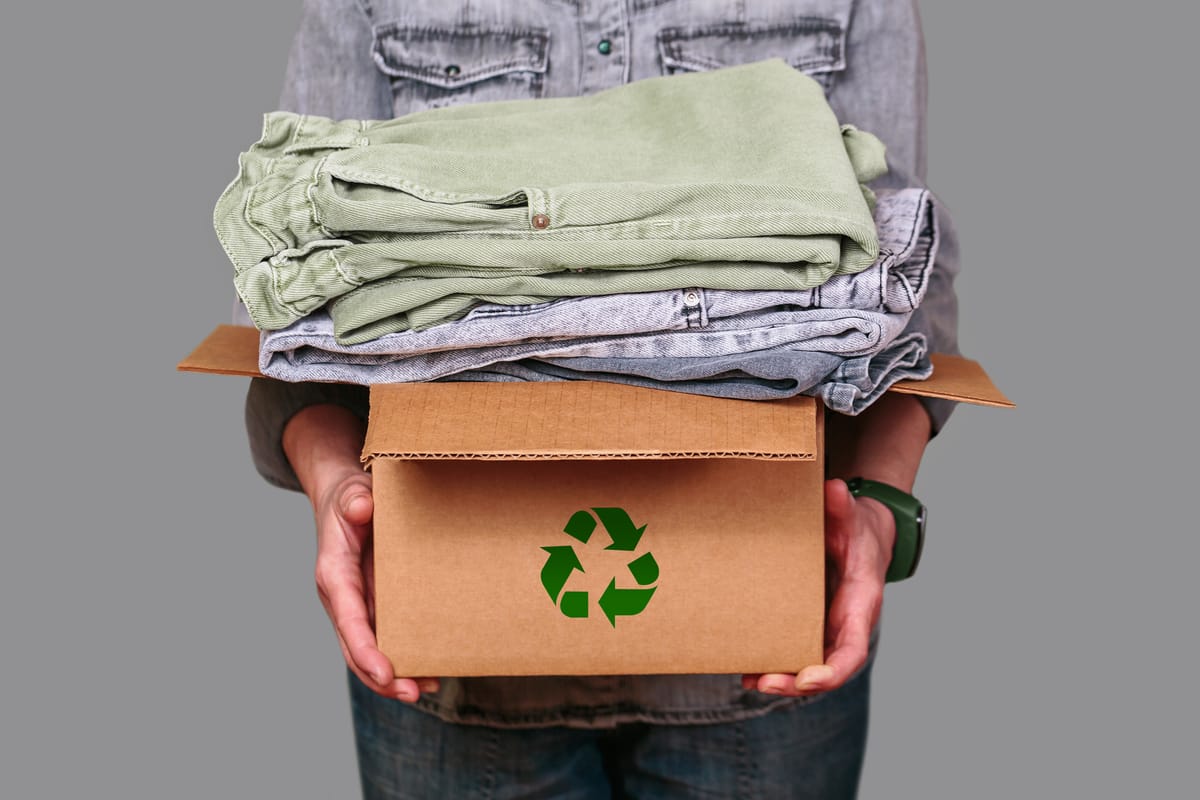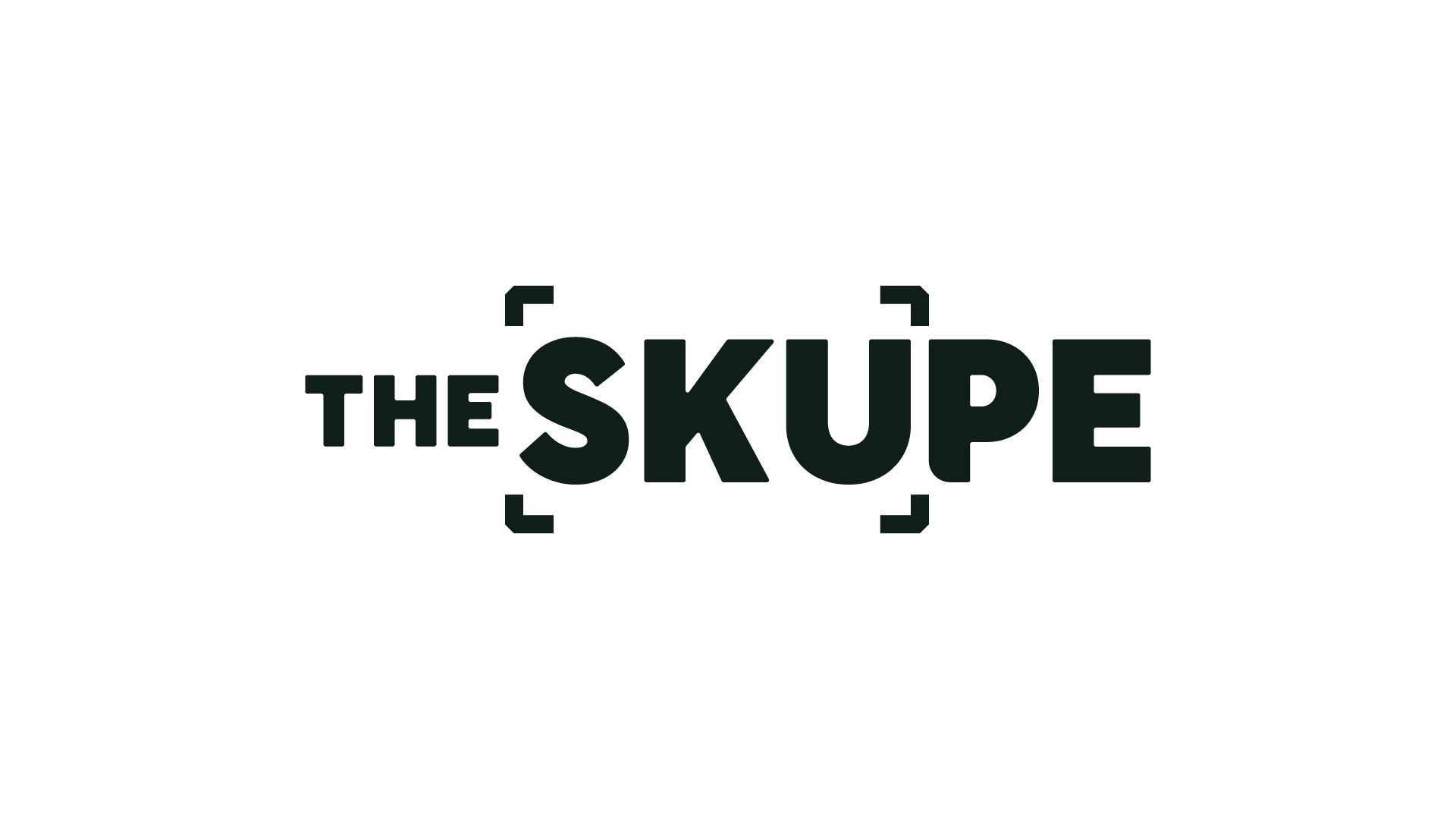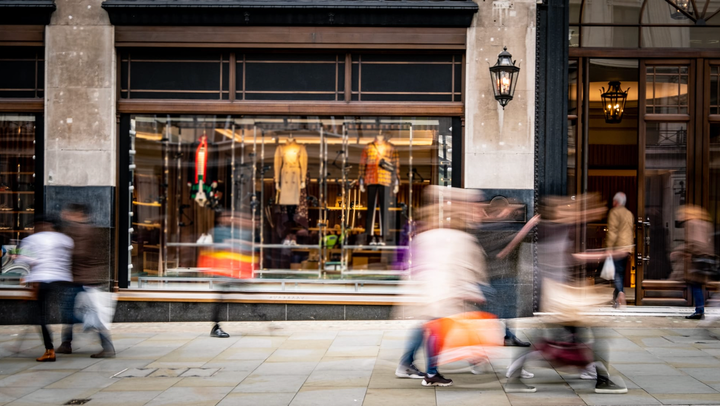Sustainability is more than a moment
Plus: Immigration raids impact on retail | Summer hiring help

What's vital to our economy? It's clear that immigrants are a significant group of consumers, as brands have seen their bottom lines shrink when they stay home and stop shopping. Content creators, too, are driving the economy to the tune of a projected $50B. We get into those stories, along with the music that makes you spend and why resale and sustainability are more than trends. To highlight that, we sat down with stylist and fashion instructor Jill Stein to find out how she's encouraging circularity in the next generation. Let's get started.

Torrid affair. The beloved plus-size retailer is set to close 180 stores this year.
Labubu who? The viral plushie toy is spawning its own economy.
Wally, meet Sparky. After launching one for employees, Walmart adds a GenAI assistant for customers.
Sound of spending. There’s neuroscience behind why retailers choose certain music.
Tales from the trenches. Small business owners come to this subreddit to vent.

Mindful materialism: “Sustainability isn’t a buzzword, it’s a systems shift”
While sustainability is just a catchphrase for some, for Jill Stein, “it became personal.” As the New York-based founder of fashion innovation consultancy Jill Stein Design, one service she offers is helping clients refine their wardrobes by shopping their own closets, as well as sourcing pieces from sustainable brands and resale platforms like The RealReal and Vestiaire Collective. Stein is currently teaching a younger generation how to be sustainable at the Vogue College of Fashion Summer School—leading immersive tutorial sessions that help students think critically about the fashion industry while building their own brand concepts. Says Stein, “After two decades in media, home and fashion, this role brings it full circle: it’s about guiding the next generation to think boldly, ethically, and creatively about the world they’re stepping into.” –Marcy Medina
What have you learned about Gen Z retail habits from your students?
What surprises me isn’t how different they are, but how quickly they adapt. They toggle between digital and physical worlds with ease. They care deeply about values and identity, but they’re also savvy about trends, resale and price. They’re not just shopping brands—they’re curating personal ecosystems. And they have zero tolerance for greenwashing, which keeps all of us in the industry more honest.
What led you to focus on sustainability?
I’ve seen firsthand how extractive systems—across fashion, media and even healthcare—impact real people. I recently completed a master’s in Futures and Design at ASU-FIDM (Arizona State University’s Fashion Institute of Design & Merchandising) and my thesis, The Box Project, explored circular design and augmented reality as a way to reimagine retail experiences and reduce waste. I wanted to investigate how we might design systems that give more than they take—whether that’s material resources or human energy.
What does sustainability really mean when it comes to fashion and retail?
Sustainability isn’t a buzzword, it’s a systems shift. It means rethinking the full lifecycle of a product: where it comes from, how it’s made, who touches it, how it gets used, and what happens at the end. For fashion, it also means addressing overproduction, labor equity and cultural longevity, not just swapping out fabrics for “greener” ones.
What are some steps retailers can take now that will make an impact?
Start by being transparent—internally and externally. Map your supply chain. Measure what you can. Reduce what you don’t need. Then, center education—help your customers understand the value behind your product. Gen Z isn’t asking brands to be perfect, but they are asking them to try—and to be real about where they are on the journey. You can do this cost-effectively through email and social media in addition to in-store events.

ICE raids’ impact felt at big brands, retailers across the country
Another negative effect of this month’s U.S. Immigration and Customs Enforcement raids? Mega companies Coca-Cola and Colgate-Palmolive, and restaurant chains Wingstop and El Pollo Loco have noticed changes to their bottom line due to immigrants staying home for fear of being deported. Businesses in cities and towns with large immigrant populations have noticed the drop in sales, too. And in manufacturing centers like Los Angeles that employ large numbers of immigrants, operations for major fashion brands have been interrupted by raids.
Why this matters: Immigrants are a vital part of the U.S. economy, not just because of the work they contribute but also what they buy as consumers. It hasn’t taken long to disrupt generations of foundation-building, or for businesses big and small to notice that they haven’t been shopping. (WSJ)
The billion-dollar creator economy: Who are the Top 50 earners?
Mr. Beast is still on top, earning a cool $85M last year from his YouTube videos, Amazon Prime show, endorsements and brand deals. So are podcaster Alex Cooper, comedians Rhett & Link and brothers Jake and Logan Paul. Really, there’s something for everyone in the creator lexicon, from relationship advice to silly stunts to wholesome family content. If YouTube and TikTok isn’t your jam, they’re also coming to streaming TV and audio channels near you.
Why this matters: Creators who were once brushed off as flash-in-the-pan viral stars have matured into full-fledged media moguls, blurring the line between showbiz and content creation. Many have signed modeling, spokesperson or even acting deals, and for younger cohorts, they’re more famous than traditional celebrities. They’re also more accessible, meaning they’re open to working with a lot of retailers. (Forbes)

At Home is the latest home retailer casualty of the slowing economy
Gen Z loves shopping on Google. Why Amazon should worry
Why retail investors are tracking Gap after its brand reboot
More retailers hit with cyberattacks: Victoria’s Secret, The North Face
BuzzFeed on TikTok: Product recs culled from social media

Tariffs discourse encourages supply chain reset, resale
As chief strategy officer of resale platform ThredUp, Alon Rotem is positioned to see retail as circular, not linear. While acknowledging that the overarching goal of taxing goods from abroad is to encourage domestic manufacturing, he posits that more companies should also be thinking about resale. The benefits are obvious, from eliminating waste to being more affordable for consumers. However, it requires a paradigm shift and government support to be truly realized.
“In a world still wrestling with fragile supply chains and growing environmental concerns, strategically-focused tariffs can do more than just encourage traditional manufacturing; they can fuel a fundamental shift toward domesticating our supply chains through the robust expansion of resale." - Alon Rotem, Chief Strategy Officer, ThredUp
Why this matters: While it will take years to revive domestic manufacturing on a large scale, the U.S. recycling infrastructure also requires significant modernization. Forward-thinking policy and tech innovation are critical to achieving a real closed-loop system of recycling across industries. Read his full column here.

Summer hiring challenges? AI can help with that
If you’re finding it difficult to hire help this summer, consider what AI can do: Assess large volumes of applicants in record time, which is key for finding help ASAP; “chatting” with candidates to make sure they feel heard and stay engaged; using science-backed assessments to evaluate the qualities that matter most; augmenting a lean recruiting team and taking the guesswork out of hiring by focusing on skills, not subjective factors like where they went to school.
Why this matters: Finding actual humans to work for you is the goal for HR, but AI can make vetting, onboarding and retaining employees a lot faster and easier. (Retail Touchpoints)

Thanks for reading this week's edition!
You can reach the newsletter team at theskupe@mynewsletter.co. We enjoy hearing from you.
Interested in advertising? Email us at newslettersales@mvfglobal.com
The SKUpe is curated and written by Marcy Medina and edited by Bianca Prieto





Comments ()